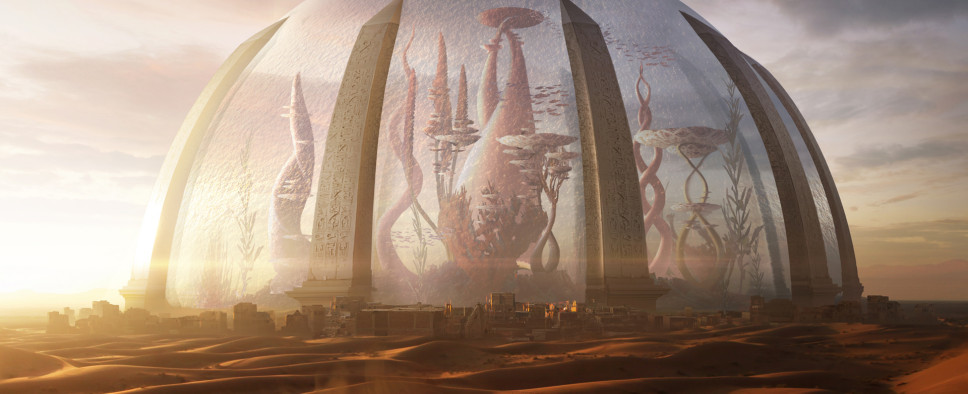Torment: Tides of Numenera Update #58: Gamescom and Building the Necropolis
-
Category: News ArchiveHits: 3148

The latest Kickstarter update for Torment: Tides of Numenera includes a report of the team's experiences at Gamescom and a look at the development of the Necropolis, an area that will house many of the Kickstarter backer tombs and gravestones. An excerpt:
As we began designing areas, we did the math. We originally planned for two scenes that would contain most of the tombs: the Valley of Dead Heroes and "Valley Part Two" which would be placed in another zone of the game. But even if we made those scenes enormous, cramming in as many tombs as we could fit on-screen while still giving the player space to walk, it would only take care of half of the required number. We also considered sprinkling the other tombstones throughout the game, but that would still require far too many tombstones to be placed in every single scene in the game. So our algorithm master and all-around guru Joby Bednar had the very Numenera idea of a massive underground storage space, now used in the Ninth World as a burial ground.
The rooms in this space would be accessed by a control panel: the user enters a code and is taken to a room in which lie a subset of our tomb/epitaph markers. Mechanically, the room would be a single Unity scene, but with the props, lighting, effects, etc. swapped out based on the code the player enters. It would take a lot of custom scripting, but it gave us the flexibility to handle all the backers we needed to feature. It was the perfect solution, and with some design constraints outlined, thus was born the Necropolis…
...
Eventually, after many discussions, what we decided on was a massive honeycomb of hexagonal tombs. Within each tomb, you can see the neighboring tombs. There is a central control room overlooking them all, where you are able to punch in an address on a hexagonal keypad where the player could enter a specific code. Within each tomb, there is a duplicate control panel that allows you the additional option to press one of the six outer hexagonal segments to teleport to one of the six neighboring tombs.
...
It became clear that while we wanted each tomb to look similar, we also wanted them to appear slightly different from each other so that players would know something changed when they went to a new tomb. This meant creating quite a few art assets that we could populate each tomb with for each individual backer tombstone and monument. Our artist Daniel Kim created a lot of these designs which we were able to assign to each individual tombstone and monument.
To create the hundreds of combinations of these assets and make each tomb look random, but not actually be random, I leveraged Unity’s built-in functionality for Perlin Noise. If you’ve played or seen Minecraft, then you are familiar with Perlin Noise and procedurally generated content. Two-dimensional Perlin Noise is effectively a grid of random-ish values, and by using a set algorithm we were able to generate the massive amounts of content, but have it be the same for every player rather than changing every time you play the game.
...
So, what does this end up looking like in the game? When the player reaches the Necropolis, what they'll see is a massive expanse of tomb chambers before them, a control panel at the center, and the option to enter a 4-digit numeric code to navigate from tomb to tomb. And of course, each backer who has a tomb will be given the code to theirs so that they can go and find it in the game – but you'll also be able to visit the tomb of anyone else, either by exploring manually or entering their specific address.

